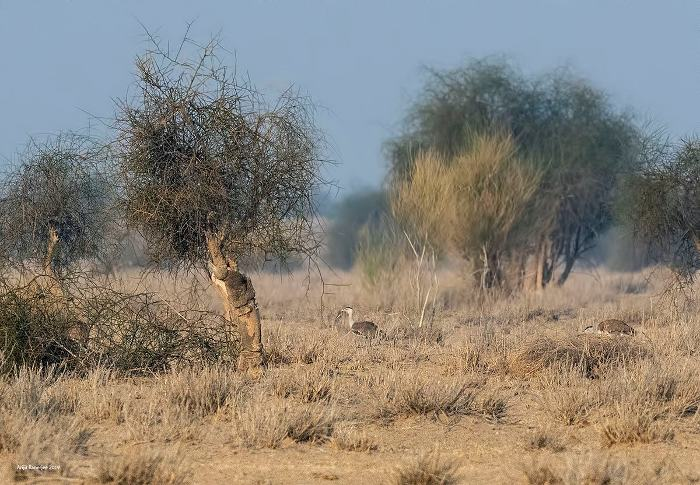





Copyright infringement not intended
Picture Courtesy: https://en.gaonconnection.com/in-rajasthan-camels-and-sheep-are-set-to-face-a-fodder-crisis-as-about-600-year-old-oran-is-being-uprooted/
Context: The proposal by the Rajasthan government to classify orans as "deemed forests" is triggering concerns among communities, particularly in western Rajasthan, who rely on these sacred groves for various purposes.
Details
|
Orans are sacred groves found in the Thar Desert region of Rajasthan. These patches of forests are traditionally protected and managed by local communities and hold immense cultural and ecological significance |
Local Concerns and Objections
Legal Perspective
|
Sacred Groves |
|
|
Key Points |
Detailed Explanation |
|
Definition |
Sacred groves are natural sanctuaries with religious or spiritual significance to a particular community. These patches of forests are typically protected and managed by the community itself. |
|
Global Presence |
Found in various cultures worldwide, including India, Africa, Japan, Europe, and the Americas. Each culture has its unique traditions and beliefs associated with these sacred spaces. |
|
Ecological Importance |
Sacred groves often act as biodiversity hotspots, harbouring a rich variety of flora and fauna. They serve as critical refuges for threatened species and contribute to ecosystem health by: Maintaining water tables and regulating local climates. |
|
Cultural Significance |
These groves hold deep cultural and spiritual value for local communities. They are often associated with deities, spirits, and ancestors. Communities use them for various purposes, including: Religious ceremonies, Rituals, Traditional medicine practices, Cultural gatherings |
|
Threats |
Encroachment for agriculture or development. Deforestation for timber or fuelwood. Unsustainable resource extraction of medicinal plants or non-timber forest products. Development projects like roads or dams. |
|
Conservation Efforts |
Community engagement: Working with local communities to develop sustainable management plans for the groves. Legal protection: Lobbying for legal recognition and protection of sacred groves. Research: Studying the ecological and cultural value of sacred groves to inform conservation strategies. Education: Raising awareness about the importance of sacred groves for biodiversity conservation and cultural heritage. |
Conclusion
|
PRACTICE QUESTION Q. What is the PRIMARY reason local communities protect sacred groves? A) To harvest timber for commercial purposes. B) To fulfill religious and cultural practices. C) To allow for unrestricted grazing by livestock. D) To generate revenue through tourism. Answer: B Explanation: Sacred groves hold deep cultural and religious significance for local communities, and their protection is often tied to traditional practices and beliefs. |






© 2026 iasgyan. All right reserved